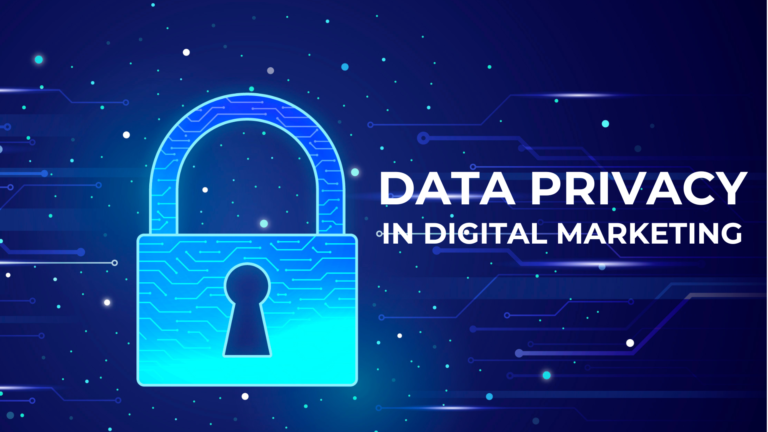Date of publication:
26 Apr. 24How Artificial Intelligence is Used in Education
The educational sector is increasingly becoming a platform for the implementation of artificial intelligence (AI) tools. Many educational institutions of various accreditation levels utilize various AI technologies to enhance the effectiveness of the learning process and the quality of learning outcomes. However, the AI tools and technologies being implemented have both pros and cons.
Thoughtful consideration of the consequences of AI application can generate new potential and provide additional incentives for the development of school and university education. The more active involvement of AI technologies is seen by experts at the University of Cambridge as one of the key trends in EdTech in 2023. By 2030, the market volume of such technologies is projected to grow by 36.6%.
Trends in Implementing AI in the Educational Sector
Researchers note that in the modern world, there are increasingly more points of intersection between the physical world and AI technologies. The forced implementation of hybrid learning for schoolchildren and students, combining offline and online formats, in many countries during 2020-2022, is now being complemented by active interaction between humans and AI.
The rapidly decreasing cost of developing VR products and technologies gradually removes barriers to their implementation at various levels of the education system, including schools and preschool institutions. However, artificial intelligence is not a replacement but a tool and assistant for teachers and educators. In developed countries, AI-expert educators will remain central figures in the learning process, helping achieve greater efficiency in education through immersion and engagement. Quality education will become increasingly elitist.
The Role of Artificial Intelligence in Education
AI tools can genuinely help improve learning outcomes and personal development. In this context, it involves improving the educational system of institutions and providing new individual growth opportunities for each student. The potential of rapidly evolving AI tools allows us to realistically consider their use in several areas, including:
- Accelerating the completion of routine tasks and processes.
- Enhanced individualization of learning.
- Information assistance in teaching material.
- Development and implementation of educational applications and content.
- Development of various soft skills.
The number of application vectors for artificial intelligence in the education system continues to increase continuously.
Benefits of Using AI Machine Learning
The significant advantages of integrating AI technologies into the educational process are based on the algorithmic functioning of student-like neural networks working with extensive databases. Experts note that AI has the most substantial impact on:
- Optimizing formalized educational and methodological processes.
- Identifying and considering the level of preparedness and individual abilities of learners.
- Updating educational and methodological materials and providing information support for teaching.
- Increasing individual efficiency and satisfaction for both educational institutions and learners.
Neural networks help reduce the routine workload of teachers and educators, turn learning into a more personalized and engaging process for students, simplify integration into new professions, and provide moral support to learners.
Automation of Teachers’ Routine Work
The quality of education primarily depends on the creativity of the teacher, their ability to present material, and engage students. However, instead of developing creative educational programs, teachers often spend most of their time checking homework, tests, and essays. Solutions based on neural networks help them get rid of this routine.
For example, the Gradescope program makes test grading accessible for teachers in subjects like biology, physics, chemistry, mathematics, and others. The user uploads the test and answers to the program, then scans sheets with students’ completed tasks. Recognizing handwritten text, the neural network matches it with correct answers, finds errors, and groups them. Then the teacher provides feedback, commenting on students’ shortcomings.
Test and Exam Creation, Content Development
Assessing knowledge is an important part of the educational process, involving the creation of various types of quizzes and tests. AI assistants can help automate this routine operation. An example of automated content development is the Smartest Learning service. Analyzing text documents, the tool can create quizzes, tests, illustrated presentations, and supplemented with graphs. Projects can be saved in the library and edited immediately.
Another example is the PrepAI service, which helps create tests based on provided material (video lectures, notes, books). Tests can also be created by entering a topic into the search window and generating a test based on internet materials. The tool operates on a neural network that:
- Recognizes content
- Segments material
- Generates different answer options
PrepAI allows creating tests for both general education school students and university students.
Personalized Learning Through AI Implementation
On the path to personalizing learning, AI algorithms help determine a student’s level of knowledge and create an individual learning plan for them. An example is Thinkster, a service for teaching schoolchildren mathematics. At the initial stage, the student takes a test, and based on the results, the app selects suitable tasks for them. Depending on how the student performs, the program adjusts the difficulty level of tasks. Interaction with the service also includes sessions with a tutor. Analytics on students helps tutors create individual lessons.
Similarly, Duolingo, an app for learning foreign languages, operates. Based on an entrance language test, the app collects exercises of the appropriate level of difficulty for the learner. By analyzing the results of their execution, assessing successes and mistakes, Duolingo selects tasks to fill gaps and improve proficiency. The app has a built-in speech recognition system, allowing users to improve pronunciation. To explain users’ mistakes, the extended version of Duolingo uses ChatGPT.
Support and Adaptation, Assistance in IT Practice
When students feel comfortable in a new environment and sense support, learning becomes more productive. Neural networks can also adapt in an unfamiliar environment. Emory University students in the USA developed the Emora AI chatbot, with which communication on deep topics is available. It can help people with depression and anxiety. This service is primarily aimed at first-year students who need support when changing their lifestyle, moving, and adapting to a new environment.
Specialized services are not a panacea for all problems; assistance can even come from a basic ChatGPT. A vivid example is AI assistance to students of the Skillfactory frontend development course in working on a large practical event involving real clients. Even team members who had studied frontend for a short time were able to cope with the task with the help of a neural network. As a result, they completed the technical task excellently with their own improvements. Where their own competencies were lacking, ChatGPT equipped with layout datasets helped them, effectively handling requests like «write code for a slider».
Risks Associated with Implementing AI in Education
Like any innovation, the integration of AI into the educational process has its pros and cons. The most important thing to remember is that artificial intelligence acts only as an assistant in the learning process and should not replace human interaction and communication. Otherwise, it can lead to a loss of emotional connection and human contact, negatively impacting students’ motivation, academic performance, and future careers.
Despite the continuous improvement of AI, errors in data analysis and decision-making are still possible. This can lead to incorrect conclusions and recommendations. Moreover, artificial intelligence lacks empathy and the ability to consider the individual characteristics of each student, which is a direct path to reducing the effectiveness of education.
The success of AI implementation in the educational process depends on a balanced approach that takes into account both the capabilities of technology and the characteristics and needs of learners and the education system.
Prospects of AI Impact on Education
The integration of artificial intelligence into education will gain momentum in the coming years. One of the most important future skills will be the high-level proficiency in AI tools. It is expected that the science of utilizing AI will become a key element of education. Currently, creating a unified dataset is one of the main tasks in the field of artificial intelligence. This will open up opportunities for immersion in a unified environment and the use of various tools in one place, making work and learning significantly more efficient.
In such a scenario, the environment will become smarter, and the toolkit will expand. The most effective educational programs will depend on the effectiveness and utilization of AI in two directions. First, the integration of AI into platforms for creating adaptive and personalized educational algorithms. Second, the creation of high-quality training programs to prepare experts with a high level of proficiency in AI technologies in specific fields of knowledge.



